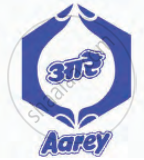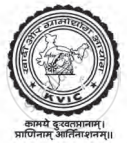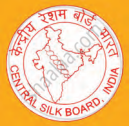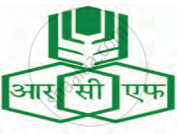Topics
Field Visit
Location and Extent
Physiography and Drainage
- Physical Divisions of India
- The North Indian Mountains
- The Himalayas
- North Indian Plains
- The Peninsular Indian Plateau
- The Indian Coastal Plains
- The Indian Islands
- Physiography of Brazil
- Brazilian Highlands
- The Great Escarpment in Brazil
- Coastline of Brazil
- Brazilian Plains
- Brazilian Island
- Drainage of Brazil
- Drainage Systems of India
- Himalayan Rivers
- Peninsular Rivers
Climate
Natural Vegetation and Wildlife
Population
Human Settlements
Economy and Occupations
Tourism, Transport and Communication
Geography - Physical Divisions of India
Identification of Physical divisions
- Identification of Physical Divisions
Geography - North Indian Mountains
Himalayas
Associated mountains
- Concept of Associated Mountains
Geography - North Indian Plain Region
Deserts
- Desert
Western Plains
- Concept of Western Plains
Central Plains
- Concept on Central Plains
Delta region
- Concept of Delta Region
Eastern Plains
- Concept of Eastern Plains
Geography - Peninsular Plateau Region
Chhotta Nagpur Plateau
- Concept for Chhotta Nagpur Plateau
Malwa Plateau
- Concept on Malwa Plateau
Maharashtra Plateau
- Concept for Maharashtra Plateau
Karnataka Plateau
- Concept for Karnataka Plateau
Telangana Plateau
- Concept for Telangana Plateau
Geography - Western Ghats and Eastern Ghats
Eastern Ghats
- Concept on Eastern Ghats
Sahyadries
- Concept on Sahyadries
Geography - Coastal Region
- Geography - Coastal Region
Eastern coastal plain
- Coastal Region - Eastern Coastal Plain
- Concept for Western Coastal Plain
Western coastal plain
- Concept for Western Coastal Plain
Geography - Indian Islands
- Geography - Indian Islands
Eastern Islands
- Indian Islands - Eastern Islands
Western Islands
- Indian Islands - Western Islands
Geography - Practical 1
Cartography
- Concept on Cartography
Geography - Practical 2
Two dimensional diagrams
- Two Dimensional Shapes
One dimensional diagrams
- Concept on One Dimensional Diagrams
Economics - Introduction of an Economy
Introduction of an Economy
- Economy
- Types of Economy
- Main Features of Economy
Economics - Basic problems of an economy solution
Solutions
- Concept for Capitalism
- Concept for Socialism
- Mixed Economy
Problems
- Introduction of Basic Problems of an Economy
- Problems- for Whom to Produce
- Problem - How Much to Produce
- Problem - by Whom to Produce
Economics - Inflation
Introduction
- Introduction of Inflation
Effects of inflation
- Effects of Inflation
Measures of Inflation
- Measures of Inflation
Causes of inflation
- Causes of Inflation
Economics - Public distribution system and consumer protection
- Measures of Inflation
Public Distribution system - meaning and explanation
- Public Distribution System - Meaning and Explanation
Introduction
- Introduction of Public Distribution System and Consumer Protection
Objectives of Public Distribution system
- Objectives of Public Distribution System
Remedial Measures
- Remedial Measures Public Distribution System and Consumer Protection
Consumer Protection
- Consumer Protection - Rights and Duties of Cunsumer, Food Adulteration
Drawbacks of Public Distribution system
- Drawbacks of Public Distribution System
Progress of Public Distribution system
- Progress of Public Distribution System
Notes
Industries in India
- In India, the distribution of industries is very unbalanced. This is due in part to the unequal distribution of the required raw materials and power resources as well as the concentration of businesses, financial resources, and other requirement in big cities.
- The majority of the metallic mineral reserves are found in Jharkhand, Orissa, neighbouring Chhattisgarh, Madhya Pradesh, portions of Rajasthan, Karnataka, and Tamil Nadu. Therefore, with almost all of the steel centres located here, this area, especially the north-eastern part of the peninsula, has a very high concentration of heavy metallurgical industries.
- A number of thermal power projects, cheap power from the Damodar-Valley Corporation, and the availability of large quantities of coal and refractory materials have all contributed to the benefits.
- Copper, lead, and zinc are produced in Rajasthan; steel manganese, and aluminium are produced in Karnataka; and aluminium is produced in Tamil Nadu.
- The regions that produce raw materials are heavily concentrated with agro-based industries like cotton, jute, and sugar. The forest areas of various states are home to the forest-based industries that produce things like paper, plywood, matches, resins, and lac. Coir, copra, and fish canning industries are heavily concentrated in Kerala's coastal region.
- While Mathura and Barauni refineries are located in the interior, far from the coast and oil-producing areas, Koyali, Digboi, Noonmati, and Bongaigaon refineries are located close to the petroleum producing areas. The distribution of cement industry is also highly conditioned by the availability of raw materials.
- The majority of the nation's salt is produced in Gujarat, Rajasthan, and Tamil Nadu. Many consumer industries, such as mechanical engineering, electricals, automobiles, fertiliser, and others, have popped up all over the nation, with a greater concentration in the vicinity of the major cities. These industries do not favour any particular raw material.
Example
Look at fig. Observe the logos given below and answer the following questions.
a. 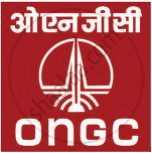 |
b. 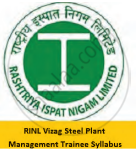 |
c.
|
d.
|
|
e.
|
f.
|
g.
|
h.
|
| Logos of Various Industries | |||
- Identify the industries with which they are associated.
- Which raw material is used for these industries. Classify them accordingly.
- From which part of India do they get these raw materials? Discuss and write.
- a. Oil and Natural Gas Corporation – Oil and natural gas exploration and production
b. Rashtriya Ispat Nigam Ltd. (RINL) – Steel production
c. Aarey – Dairy and dairy products
d. Chittaranjan Locomotive Works (CLW) – Electric locomotive manufacturing
e. Maharashtra Agro Industries Development Corporation (Limited) MAIDC – Production of pesticides, fertilizers, animal feed, agro-engineering (introducing new kinds of farm implements, sale and repair of tractors, harvesters etc.) and processing food (like jams, jellies and sauces)
f. Khadi and Village industries Commission (KVIC)-Establishment and development of khadi and village Industries in rural areas
g. Central Silk Board (CSB) – Silk production
h. Rashtriya Chemical and Fertilizers Ltd. (RCF) Chemical and fertilizer production -
Classification Industries Raw materials Agro-based industries Maharashtra Agro-industries Development Corporation Ltd. Seeds, raw materials required for the production of pesticides, fertilisers Khadi and Village Industries Commission Cotton, silk and wool Animal product-based industries Aarey Milk Central Silk Board (CSB) Silk Minerals and metal-based industries Oil and Natural Gas Corporation Limited (ONGC) Crude oil and natural gas Rashtriya Ispat Nigam Ltd. (RINL) Iron ore and coal Chittaranjan Locomotive Works (CLW) Iron and steel and aluminium Rashtriya Chemical and Fertilizers Ltd. (RCF) Chemicals and different minerals - a. Iron ore, coal, limestone etc.: Chhota Nagpur plateau area of Jharkhand, Odisha, Chhattisgarh, Bengal, Madhya Pradesh, Rajasthan, Karnataka, Goa, Maharashtra etc.
b. Natural Gas: Krishna-Godavari Basin, Mumbai High in Arabian Sea
c. Mineral Oil: Mumbai High in Arabian sea, Digboi in Assam, Ankleshwar in Gujarat
d. Milk: Bihar, Tamil Nadu, Haryana, Maharashtra, Punjab, Gujarat etc.
e. Cotton: Gujarat, Maharashtra, Telangana, Karnataka, Andhra Pradesh
f. Silk: Karnataka, Andhra Pradesh, Tamil Nadu, West Bengal, Jammu and Kashmir
If you would like to contribute notes or other learning material, please submit them using the button below.
Related QuestionsVIEW ALL [5]
Look at fig. Observe the logos given below and answer the following questions.
a.  |
b.  |
c.
|
d.
|
|
e.
|
f.
|
g.
|
h.
|
| Logos of Various Industries | |||
- Identify the industries with which they are associated.
- Which raw material is used for these industries. Classify them accordingly.
- From which part of India do they get these raw materials? Discuss and write.
